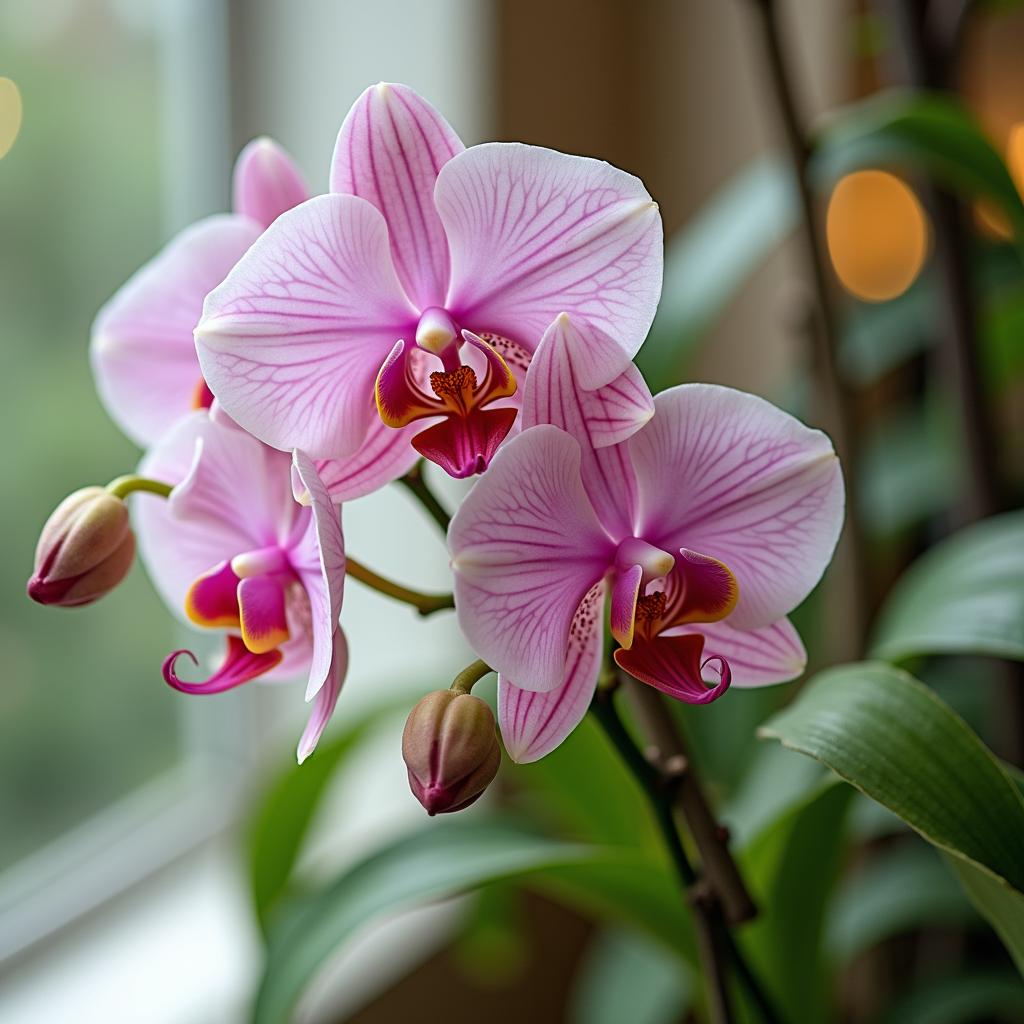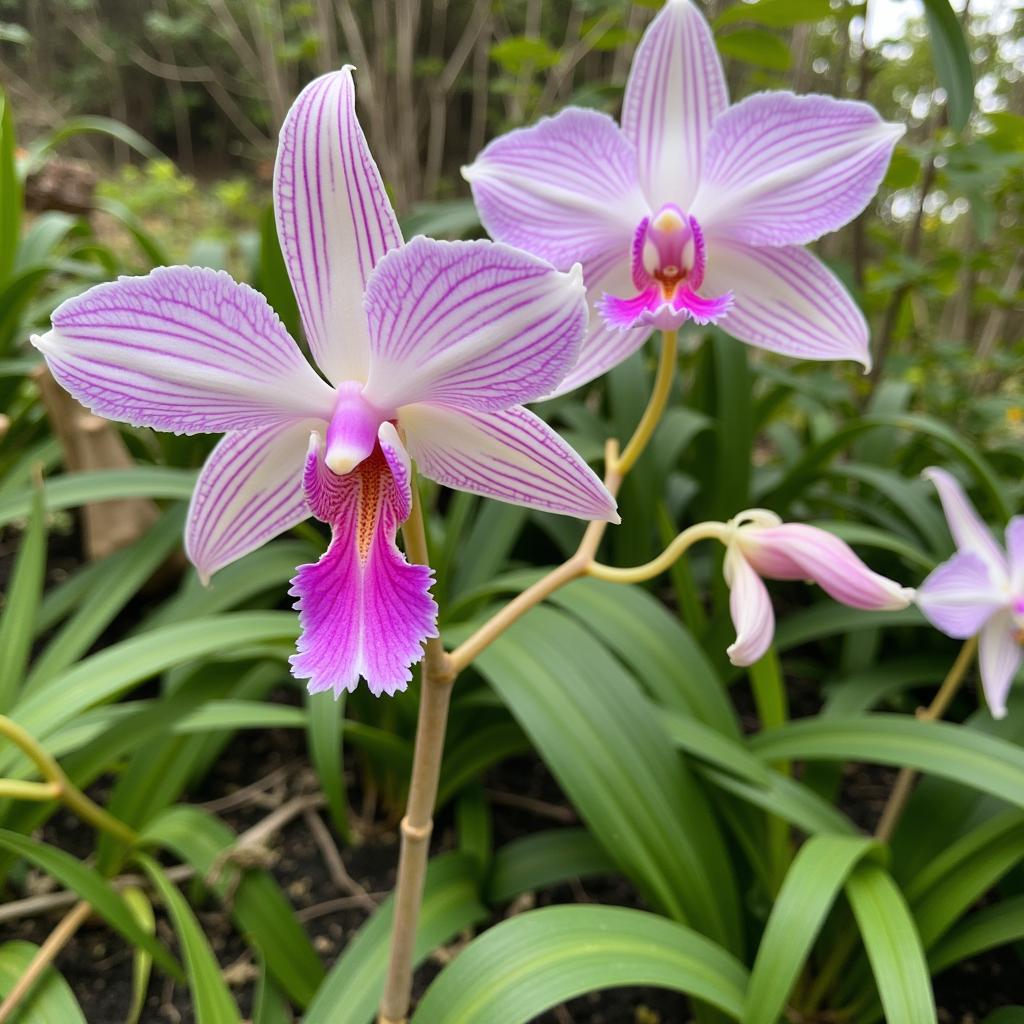Orchids are a diverse family of flowering plants, boasting over 25,000 species and numerous hybrids. Among the most popular species are Phalaenopsis, Dendrobium, and Cattleya, each with its distinct characteristics and care requirements. Understanding these unique species is essential for anyone who wishes to cultivate orchids successfully.
Buy Orchids https://vivaorchids.com
The Phalaenopsis, commonly known as the moth orchid, is favored for its long-lasting blooms and ability to thrive indoors. This orchid prefers indirect light and requires a humid environment, with temperatures between 65°F and 75°F during the day and slightly cooler at night. Regular watering is crucial, taking care to allow the roots to dry out between intervals, as this species is susceptible to root rot if left in standing water. Additionally, Phalaenopsis orchids benefit from monthly fertilization during their growing season to promote healthy foliage and blooms.
Another noteworthy type is the Dendrobium, known for its vigorous growth and beautiful, clustered flowers. Dendrobiums generally require brighter light than Phalaenopsis and enjoy temperatures ranging from 70°F to 80°F. They thrive in humidity as well, but their watering needs differ; during their active growth phase, they should be watered regularly, while allowing the medium to partially dry out during dormancy is vital. This change in care reflects their natural cycle, which is crucial for successful blooming.

Orchid Plants https://vivaflowers.com/product/plant/orchid-plants/
Lastly, the Cattleya orchid is renowned for its large and fragrant flowers, often considered the “queen of orchids.” Like the Dendrobium, Cattleyas enjoy strong, direct light and prefer warmer temperatures. Their care requires a slightly different approach in terms of watering; they must be watered thoroughly during their active growth before allowing the medium to dry out. Understanding these specific needs according to the orchid types can lead to enhanced growth and flowering, ensuring that your orchids flourish and contribute beauty to your space.
Watering and Feeding: Keeping Your Orchids Thriving
Watering and feeding are crucial aspects of orchid care that directly influence their health and growth. The frequency of watering largely depends on the type of orchid, humidity levels, and the potting medium used. Generally, it is advisable to water orchids every 1 to 2 weeks. However, thorough checks of the soil moisture should guide your decisions. You can assess moisture by inserting your finger about an inch into the potting medium; if it feels dry, it is time to water. Another effective method is to lift the pot; a lighter weight indicates that the plant requires water.

When watering, it is best to soak the pot in lukewarm water for about 10 to 15 minutes, allowing the roots to absorb moisture adequately. Ensure that the pot has drainage holes to prevent standing water, which can lead to root rot. Additionally, using distilled or rainwater is recommended as tap water may contain chemicals harmful to orchid roots.
Order Orchids https://eastbocaflorist.com/shop-category/orchids/
Fertilizing orchids is another essential component of their care regimen. During the growing season, typically spring and summer, orchids benefit from a balanced fertilizer formulated specifically for these plants. A formula with a nitrogen, phosphorus, and potassium ratio of 30-10-10 or 20-20-20 can be effective. It is suggested to dilute the fertilizer to half strength and apply it every two to four weeks, based on the observed growth. As the growing season ends, typically in the fall, reduce feeding frequency, allowing the plant to enter a dormant state.

In conclusion, a diligent approach to both watering and feeding will significantly enhance the vitality and longevity of your orchids. By understanding the needs of these remarkable plants, you can create an environment conducive to their flourishing health.
Light, Temperature, and Humidity: Creating the Perfect Environment
The proper environment is crucial for the healthy growth of orchids. This includes several factors, particularly light exposure, temperature, and humidity levels. Orchids thrive in bright, indirect light, which is often best achieved near a window covered by sheer curtains. While direct sunlight can scorch the delicate leaves of orchids, insufficient light may result in inadequate blooming. To supplement natural light and ensure your orchids receive the optimal amount of brightness, consider using artificial grow lights. These specialized lights can help mimic the natural sunlight that orchids need to photosynthesize effectively.
Fort Lauderdale Orchids https://orchidsfortlauderdale.com/

Temperature is another essential aspect of orchid care. Most orchids prefer a temperature range of 65°F to 75°F during the day and slightly cooler temperatures at night. This temperature fluctuation helps mimic the natural conditions many orchids experience in their native habitats. It is crucial to maintain this temperature balance to avoid stressing the plants. Any significant deviation from this range could lead to poor growth or bloom loss, highlighting the importance of monitoring your orchid’s environment closely.
Furthermore, humidity levels should be carefully managed to create the perfect environment for orchids. The ideal humidity for these plants typically falls between 40% and 70%. To achieve optimal humidity in your home, you may consider using humidity trays filled with water and pebbles, which can help maintain a moist microclimate around your orchids. Alternatively, regular misting can also provide a quick humidity boost, especially in drier months. By strategically addressing light, temperature, and humidity levels, you can create the ideal environment needed for your orchids to flourish.
Common Problems and Solutions: Troubleshooting Orchid Care
Orchids are renowned for their exquisite beauty and delicate structure, yet they can be prone to several common problems that may affect their health and vitality. Understanding these issues and their respective solutions is crucial for any orchid caregiver. One prevalent problem is pest infestation. Common pests that may target orchids include aphids, mealybugs, and spider mites. Signs of infestation can manifest as yellowing leaves, sticky residues, or visible insects on the plant. For effective pest control, regularly inspecting the plants and utilizing insecticidal soap or neem oil can be beneficial. Moreover, implementing a quarantine protocol for new plants can help prevent the spread of pests.
Another challenge faced by orchid owners is the risk of fungal or bacterial infections. Symptoms such as black spots on leaves or mushy roots can indicate the presence of diseases, often exacerbated by overwatering or poor air circulation. To combat these issues, it is recommended to adjust the watering schedule and ensure the pots have ample drainage holes. If an infection is suspected, removing affected parts of the plant and applying a fungicide can promote recovery.

Environmental stressors can also impact orchid health, with factors such as low humidity, insufficient light, or sudden temperature fluctuations posing threats. Providing optimal care entails placing the orchids in a location with bright, indirect sunlight and maintaining a humidity level between 40-70%. Utilizing humidity trays or misting the plants can help improve moisture levels. Additionally, protecting orchids from drafts or extreme temperature changes will facilitate a more stable growing environment.
Boca raton Orchids https://vivabocaflowers.com/shop-category/flowers/orchids/
By addressing these common issues—pests, diseases, and environmental stressors—orchid caregivers can ensure their plants remain healthy and vibrant. Early detection and proactive management are key to troubleshooting orchid care effectively.





